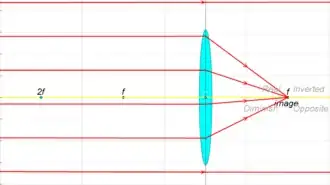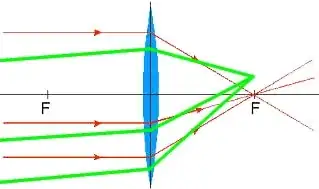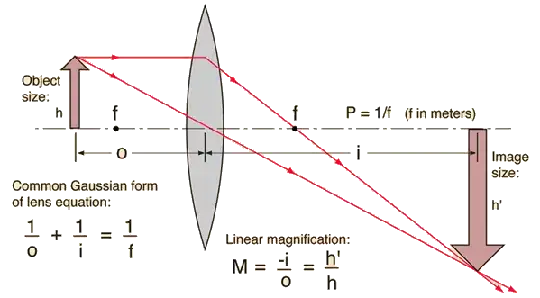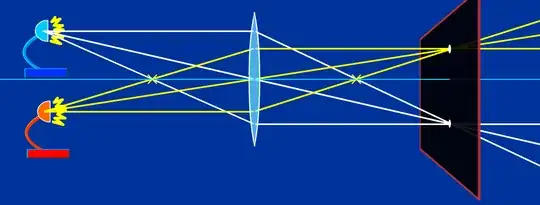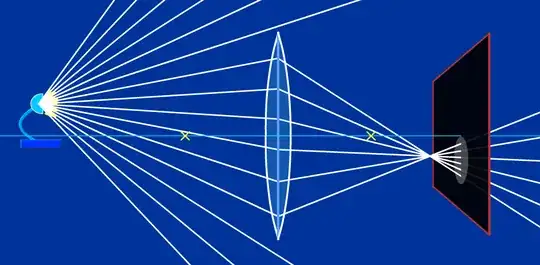Truth be told: geometric optics is wrong. It is sufficient for small angles and not too complicated setups, but is still an approximation.
The first thing: Normal lenses do have not a focal point, but something which resembles more a line, the so-called caustic. The correct shape for getting a perfect point on the line crossing the middle of the lens (I call that axis now) is not a spherical shape, but a complicated curve, the cartesian ovoid. So you won't get a point image from normal optical surfaces in the first place; there are aplanatic lenses, but they are extremely expensive.
Second: Even if you have an aplanatic lens, still light is not a ray, but a wavefront. A perfect planar wavefront which passes an aplanatic lens forms still not a point, but a so-called airy disc. You see that very well that if you increase magnification; at some point the image gets more and more fuzzy, the airy discs of the point images are starting to overlap and ruin the image. The only possibility to avoid that is to increase the size of the lens or mirror which makes the airy disc smaller (That is the reason astronomers need big, big lenses and mirrors).
But even that is not sufficient enough if you want really high-quality, in that case you need the exact light equations which are described by the Maxwell equations.
Now we need an image, I am using the open source image of the German Wikipedia under "Linsengleichung":

As you see, if the source of the light rays is near the lens, the rays are not running parallel and their image does not develop in the focal point f, but in increased distance. You are using two rays from the same point: One parallel to the axis which crosses the focal point and one which runs from the point exactly through the lens. Where they cross is the image of the source point and this is not the focal point !
